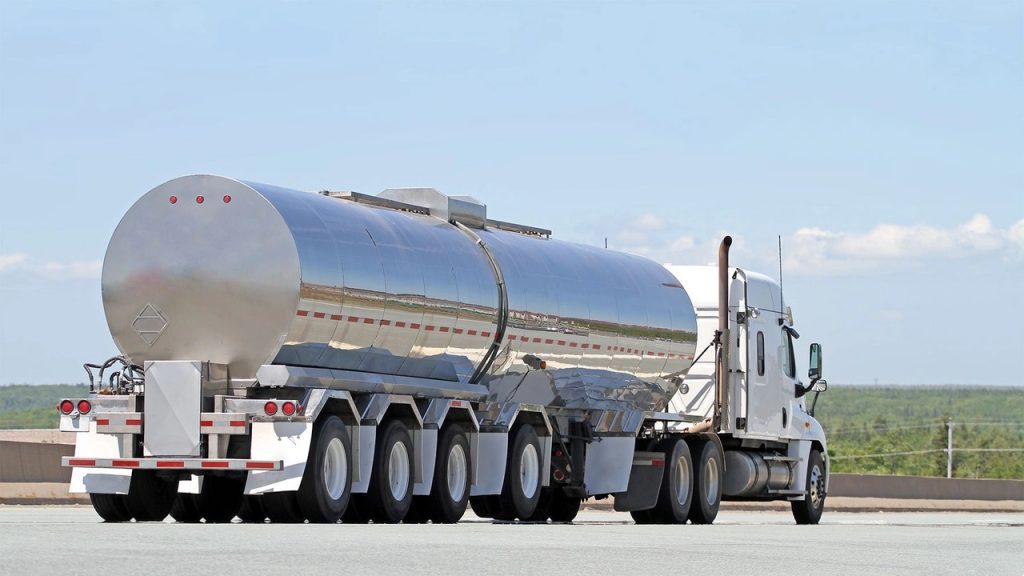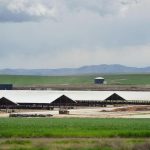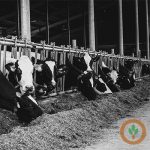
While the “higher-of” proposal gets cheers, make allowance increases bring jeers.
The biggest change to the Federal Milk Marketing Order system in years will soon be voted on by dairy producers across the country.
“There are winners and losers in this,” says Chris Wolf, ag economist with Cornell University.
Two of the biggest changes include returning to the “higher-of” formula for calculating the Class I dairy price and raising make allowances — an estimate of dairy processors’ cost of converting milk into commodity dairy products — for cheese, butter, nonfat dry milk and dry whey.
It also includes a new rolling monthly Class I extended shelf life adjustment, which USDA states would provide for better price equity for ESL products whose marketing characteristics are distinct from other Class I products.
Local dairy leaders say they are pleased with the proposed changes.
“The net changes are likely to benefit dairy farmers across the United States, particularly the Northeast, with increases in farmer revenue,” says Catherine de Ronde, vice president of economics and legislative affairs at Agrimark. “Additionally, the increase in make allowances better reflect current costs of processing, thus improving marketing conditions within the orders.”
Keith Kimball, chairman of the Northeast Dairy Producers Association, was also positive.
“While these proposed amendments are a step in the right direction, NEDPA looks forward to analyzing the USDA’s entire proposal, making an informed assessment of all changes, and working with our industry partners to continue to improve our complex dairy pricing systems to support our family farms,” he said in a written statement.
Bill Rowell, who operates Green Mountain Dairy in Sheldon, Vt., a 950-cow operation, says he was pleased USDA recommended returning to the “higher-of” formula for calculating the Class I mover.
In a letter he wrote to USDA in February, Rowell argued that moving to the “average-of” Class III and Class IV, plus 74 cents, as mandated in the 2018 Farm Bill, distorted prices and devalued fluid milk, pointing to 2020 when Class III (cheese) prices got so high that it led to mass de-pooling of milk and negative producer price differentials (PPDs) on milk checks.
“It looks like we got most everything we wanted. It was done in a matter that was based on common sense and fairness. There were a few trade-offs in there, I suppose,” Rowell says. “We got quite a lot, but we really needed something updated, and I think they did a pretty respectable job. I would commend them for their effort.”
Make allowance rage
Not everyone is singing USDA’s praises.
Zippy Duvall, president of American Farm Bureau Federation, says that while reverting to the higher-of formula is welcome, increases in make allowances are not.
“We also strongly believe make allowances should not be changed without a mandatory, audited survey of processors’ costs,” he wrote. “Our dairy farmers deserve fairness in their milk checks and transparency in the formula, but the milk marketing order system can’t deliver that unless make allowances are based on accurate and unbiased data.”
Laurie Fischer, CEO of the American Dairy Coalition, wrote that the proposed changes don’t treat dairy regions fairly and could result in some producers voting “no” to the proposal. At least two-thirds of producers, or two-thirds of the milk volume represented in each order, must approve of the changes. Otherwise, USDA could terminate the order.
Like Duvall, Fischer says higher make allowances should also come with audited cost surveys. “We are also disappointed that USDA has proposed higher make allowance credits for processors, which are, in effect, deductions from farmer milk checks that are embedded within the pricing formulas,” she wrote. “The industry does not yet have mandatory, audited cost surveys, and there is no connection between increased processor credits and a transparent, adequate price paid to farmers.”
The coalition states that USDA’s own economic analysis shows the entire package of proposed changes, combined, would have increased FMMO pool values by an average of 32 cents per cwt the past five years, but would have reduced Upper Midwest pool values by 10 cents per cwt, and California pool values by 20 cents per cwt.
At first glance, Wolf says it appears producers in the Upper Midwest and California were “taking it in the chin” with the recommendations because those orders rely heavily on manufacturing. For example, more than 90% of Wisconsin milk gets made into cheese. But he says the USDA had to balance looking out for producers and consumers by “splitting the baby” on its recommendations.
“I don’t think they had another choice” with some of these proposals, he says. “When it comes down to voting on this, the producers will be voting on do we want this final decision, which probably will look like the recommended decision because historically they do, or do we want no order at all.”
Wolf says the make allowance recommendations are higher than recommendations put forward by the National Milk Producers Federation, but lower than recommendations by the Wisconsin Cheese Makers Association and the International Dairy Foods Association.
“It is kind of a middle ground,” he says, adding that the department is likely going to do more frequent cost surveys and updates on make allowances. But it doesn’t have that authorization yet, and it would have to get it through the farm bill.
“Everything else equal, increase in the make allowance results in a lower farm price,” Wolf says. “However, it’s pretty clear that there’s co-ops that are reblending losses on the manufacturing side, and there’s proprietary or investor-owned processors that have done away with over-order premiums because they are not covering their manufacturing costs.
“So, to the extent that co-ops are not losing money at these higher make allowances, that wouldn’t be coming off as a deduction, potentially. And to the extent that you have more proprietary firms covering their make allowances, they may be able to put some of those over-order premiums back into place.”
Wolf says he was not surprised USDA wants to revert to the higher-of formula for calculating the Class I moving price.
“I will tell you, this was the one that I certainly heard the most about” from producers, he says. “And so, this was the one, at the farm level, there was the most kind of uniform agreement on, that this needed to happen.”
What’s next?
USDA expects to publish its decision in the Federal Register sometime this month. Once published, there will be a 60-day comment period. Comments may be submitted at the Federal eRulemaking portal at regulations.gov. Comments may also be filed with the Hearing Clerk, U.S. Department of Agriculture, Room 1031-S, Washington, DC 20250-9200, or by fax at 202-720-9976.
All comments should reference the docket number, and the date and page number of this issue of the Federal Register.
After the 60-day comment period, USDA will have 60 days to issue a final decision addressing public comments.
Eligible producers will have the chance to vote on the proposed changes via a vote that will be administered and overseen by USDA. Only producers pooled in an order during a specified representative month will be given the chance to vote. A producer’s eligibility to vote will be determined by FMMO market administrators. More information on the voting process will be provided with the final decision.
This last point is important: If at least two-thirds of the producers voting or two-thirds of the milk volume represented in the vote approve of FMMOs as proposed to be amended, then AMS would issue a final rule implementing the changes. Each FMMO will be voted on individually. If the approval threshold is not met, then USDA would proceed to terminate the respective FMMO.
You can now read the most important #news on #eDairyNews #Whatsapp channels!!!
🇺🇸 eDairy News INGLÊS: https://whatsapp.com/channel/0029VaKsjzGDTkJyIN6hcP1K

























